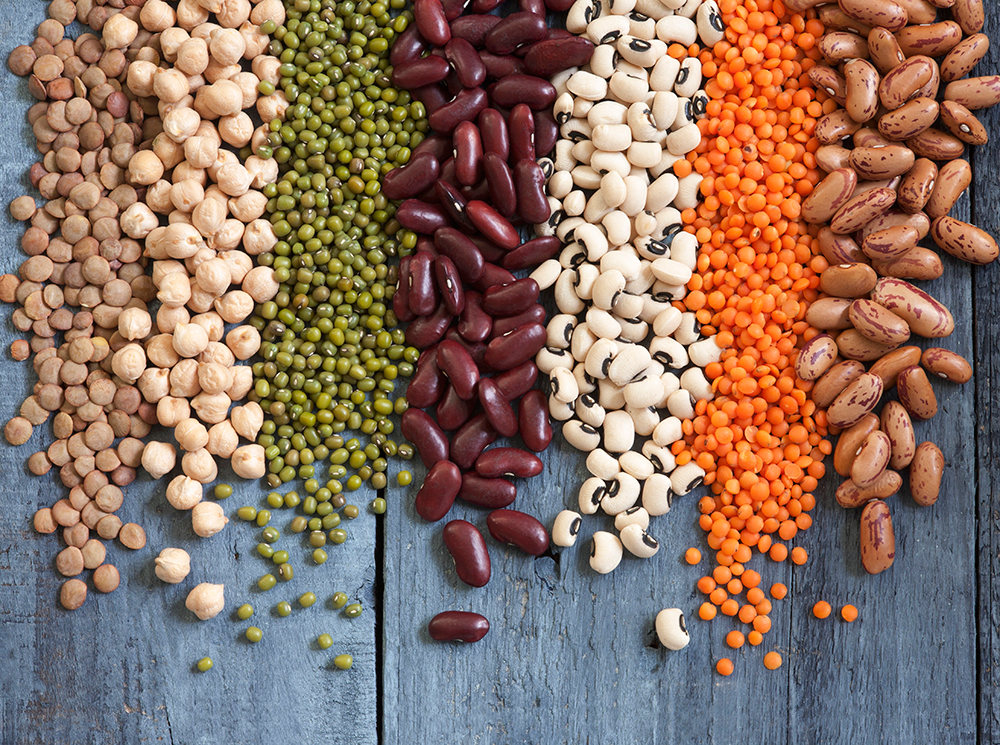India FTA a plus for lentils, chickpeas miss the boat

The Australian and Indian governments on Saturday signed the Australia-India Economic Cooperation and Trade Agreement (AI ECTA), with lentils the only bulk commodity in the grains space to benefit.
The Australian Government said the agreement will make Australian exports to India cheaper, and eliminate tariffs on more than 85 per cent of Australian goods exported to India, rising to almost 91pc over 10 years.
“This agreement opens a big door into the world’s fastest growing major economy for Australian farmers, manufacturers, producers and so many more,” Australian Prime Minister Scott Morrison said in a statement.
“This is great news for lobster fishers in Tasmania, wine producers in South Australia, macadamia farmers in Queensland, critical minerals miners in Western Australia, lamb farmers from New South Wales, wool producers from Victoria and metallic ore producers from the Northern Territory.”
However, it holds no joy for Australia’s chickpea growers, who are effectively locked out of what was their biggest market by a hefty tariff imposed to reduce price pressure on India’s domestic crop.
Responding to the announcement of the bilateral agreement, Australian farmer-representative group GrainGrowers has already called for more work to be done on a mutually beneficial agreement in the future.
In a statement, GrainGrowers said the interim free-trade agreement (FTA) offered potential benefits for Australian lentils, and over time will see benefit for faba beans, canola oil and soybeans.
However, it said the Australian grain industry’s trading partnership with India would be largely “business as usual”.
“The details of the interim free trade agreement with India are a little frustrating, given the enormous potential for exports, particularly our chickpeas into this market” GrainGrowers chair Brett Hosking said.
“Having spoken to many growers across the country, we were hoping for a more positive result for Australian chickpeas and wheat.
“While domestic production in India of chickpeas is currently strong, there have and will be again, periods where seasonal conditions can’t meet demands.
“Australian growers are perfectly positioned to be able to support the Indian population through these shortages although under this FTA, that won’t be an option.”
According to USDA’s India Grain and Feed Annual 2021, India currently has an import duty of 40pc on wheat, and its imports are limited because of its high domestic production.
Trade data shows India is a volume exporter this year because of its own bumper crop, but it imports in small crop years.
India is Australia’s biggest market for lentils, which currently have a zero tariff.
In recent years, that tariff has been set at zero, 10pc or 30pc, depending on India’s domestic lentil production.
The Federal Government said Australia and India have agreed to undertake cooperation to promote agricultural trade, and will now work toward concluding an enhanced agricultural Memorandum of Understanding.
The AI ECTA is of considerable benefit to horticultural and specialist pulse markets.
Tariffs up to 30pc will be eliminated over seven years on some fruits, nuts and vegetables, as well as broad, kidney and adzuki beans.
However, what it means exactly for lentils is unclear.
“Tariffs on almonds, lentils, oranges, mandarins, pears, apricots and strawberries will be reduced,” the Federal Government stated.
In commentary published today on the Thomas Elder Markets website, analyst Andrew Whitelaw a free-trade agreement with the removal of the chickpea tariff would have been a game-changer.
“As it stands, not much is likely to change in the near term for Australian grains and pulses to India,” Mr Whitelaw said.
“The farm lobby in India is very strong, and farmers were not happy about the lentil tariff removal.
“They will be pushing to continue to keep Australian chickpeas out.”
The Australian Government statement described India as the world’s largest democracy and the world’s fastest-growing major economy, with GDP projected to grow at 9pc in 2021-22 and 2022-23.
In 2020, India was Australia’s seventh-largest trading partner, with two-way trade valued at $24.3 billion, and its sixth-largest goods and services export market, valued at $16.9B.
The Australian Government said its goal is to lift India into Australia’s top three export markets by 2035, and to make India the third-largest destination in Asia for outward Australian investment.
Australian services suppliers in 31 sectors and sub-sectors will be guaranteed to receive the best treatment accorded by India to any future FTA partner, including: higher education; adult education; business services, and research and development.
Australia will also provide new access for young Indians to participate in working holidays in Australia.
Places in Australia’s Work and Holiday program will be set at 1000 per year and Australia will have two years to implement the outcome.
This is expected to contribute to both workforce requirements and boost tourism to support Australia’s post-COVID recovery.
Read also
Wheat in Southern Brazil Impacted by Dry Weather and Frosts
Oilseed Industry. Leaders and Strategies in the Times of a Great Change
Black Sea & Danube Region: Oilseed and Vegoil Markets Within Ongoing Transfor...
Serbia. The drought will cause extremely high losses for farmers this year
2023/24 Safrinha Corn in Brazil 91% Harvested
Write to us
Our manager will contact you soon



